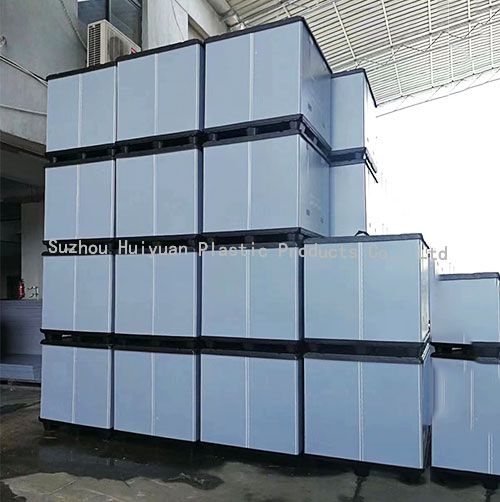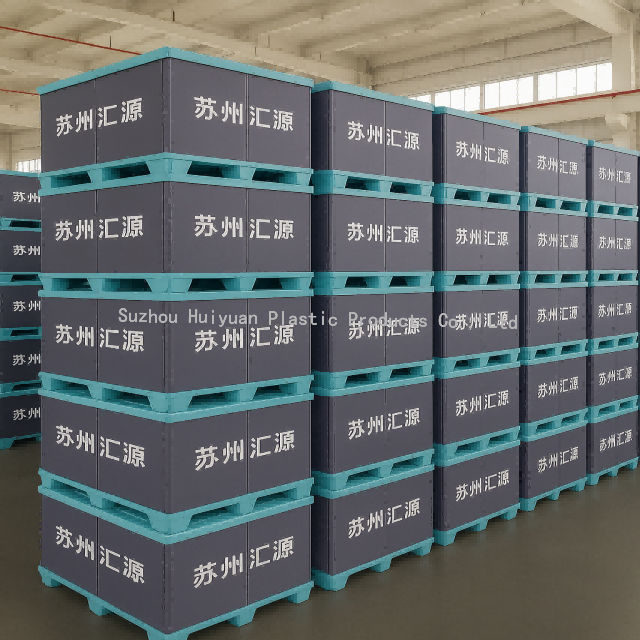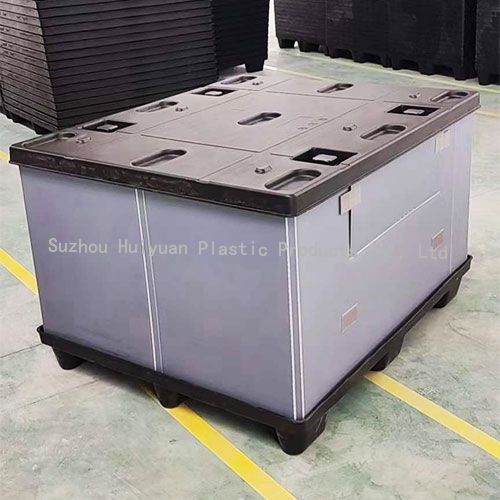©Copyright 2019 Suzhou Huiyuan Plastic Products Co., Ltd All rights reserved. Terms and Conditions Designed by iwonder.cnSite Map
In the packaging and transportation industry, selecting the right type of box is crucial for protecting goods during shipment and storage. One widely used packaging solution is the FLC box. But what exactly is an FLC box, and why is it important in logistics and supply chain operations? This article will provide a comprehensive overview of the FLC box, its features, uses, and benefits in packaging and transportation.

The term FLC box stands for Flat Loaded Container box or sometimes refers to a Foldable Large Carton box, depending on the industry context. Generally, it is a specially designed type of cardboard or corrugated box used primarily in packaging, shipping, and warehousing.
Unlike traditional boxes that come pre-assembled, an FLC box is usually shipped flat to save space and then folded into shape when ready to be used. This flat-loading feature makes it a popular choice in industries where optimizing storage and transportation efficiency is important.
Flat Packed: The box arrives flattened, which means it takes up minimal space during transportation to the packaging site.
Foldable Design: Easy to assemble and fold into a full box when needed.
Durable Material: Made from sturdy corrugated cardboard or other reinforced paperboard, designed to withstand handling and protect contents.
Varied Sizes: Available in multiple sizes and specifications to accommodate different product types and weights.
Stackable: Once assembled and filled, FLC boxes are designed to be stackable, aiding in efficient palletizing and warehouse storage.
Most FLC boxes are made from corrugated cardboard, the same material used in standard shipping boxes. Corrugated cardboard consists of three layers: two flat linerboards on the outside with a wavy, fluted sheet sandwiched between them. This construction provides strength and cushioning, protecting items during transit.
Depending on the requirements of the shipment, FLC boxes can be produced with single-wall, double-wall, or even triple-wall corrugated material. Double and triple-wall boxes offer enhanced durability for heavier or fragile goods.
FLC boxes are widely used across various industries due to their versatility and cost-effectiveness. Here are some of the common applications:
Many manufacturers of heavy machinery parts, automotive components, and industrial tools use FLC boxes for shipping. The strong structure of the box protects these goods from damage during long-distance transportation.
Retailers and wholesalers often use FLC boxes for packing bulk quantities of consumer goods such as electronics, household appliances, and clothing. The ease of flat storage helps reduce costs in warehouses and distribution centers.
Certain types of FLC boxes designed with food-grade materials and coatings are used to pack non-perishable food items. Their protective nature ensures the products remain intact and uncontaminated.
With the rise of e-commerce, logistics providers rely heavily on reliable packaging solutions. FLC boxes offer a cost-effective way to package and ship goods of varying sizes, especially when bulk orders or large shipments are involved.

Choosing an FLC box for packaging and transportation offers several benefits:
Since FLC boxes are shipped flat, they save significant space compared to pre-assembled boxes. This reduces shipping costs and storage space requirements at the packaging site.
The efficient design and material usage help lower overall packaging costs. Additionally, the reduced shipping volume of flat boxes means lower freight charges.
FLC boxes are designed for quick and easy folding. This saves time and labor costs during packing operations.
Constructed from durable corrugated cardboard, these boxes protect goods from impact, moisture, and dust during transit.
Manufacturers can produce FLC boxes in customized sizes and with specific printing or branding, enhancing the packaging’s professionalism and marketing appeal.
The role of FLC boxes extends beyond just packaging the product. In the modern supply chain, they contribute to several operational efficiencies:
Loading and Unloading: Their sturdy design helps protect goods during handling.
Storage: Flat shipping reduces warehouse clutter until the boxes are needed.
Palletizing: FLC boxes can be stacked and secured on pallets, optimizing space in trucks and containers.
Reusability: Some FLC boxes can be reused multiple times depending on their condition and handling, further reducing waste.
With increasing attention to sustainability, FLC boxes have become a preferred packaging solution in many eco-conscious companies. Corrugated cardboard is recyclable and biodegradable, making it an environmentally friendly alternative to plastic packaging. Moreover, the ability to ship boxes flat minimizes the carbon footprint related to transportation.
Many manufacturers also use recycled materials in producing FLC boxes, further reducing environmental impact.

When deciding on a packaging box, it’s useful to understand how FLC boxes compare to other common types:
| Box Type | Flat Packed | Durability | Cost | Best For |
|---|---|---|---|---|
| FLC Box | Yes | High | Moderate | Bulk packaging, industrial goods |
| Regular Carton Box | No | Moderate | Low | Small shipments, retail goods |
| RSC Box (Regular Slotted Container) | No | Moderate to High | Low to Moderate | General shipping |
| Custom Rigid Box | No | High | High | Premium or fragile goods |
The flat-packed nature and durability of the FLC box make it especially suitable for applications requiring space optimization and robust protection.
When selecting an FLC box for your packaging and transportation needs, consider the following:
Size and Weight of Goods: Choose a box size that fits your products snugly without excessive empty space. Also, consider the weight to decide the material thickness.
Handling and Transportation Conditions: If your shipment is exposed to rough handling or long distances, opt for double or triple-wall boxes.
Environmental Requirements: If you need waterproof or food-safe packaging, check for boxes with appropriate coatings or certifications.
Branding Needs: Custom printing options can help your packaging stand out.
Budget Constraints: Balance between cost and protection to get the best value.
In summary, the FLC box is a highly practical and widely used packaging solution in the packaging and transportation industry. Its flat-packed design, sturdy construction, and versatility make it ideal for shipping a wide range of products—from industrial parts to consumer goods. By offering space efficiency, cost savings, and protection, the FLC box continues to be a preferred choice for businesses aiming to optimize their logistics and packaging processes.
Whether you are a manufacturer, distributor, or logistics provider, understanding what an FLC box is and how to leverage its advantages can help you improve your supply chain efficiency and product safety.
By continuing to use the site you agree to our privacy policy Terms and Conditions.